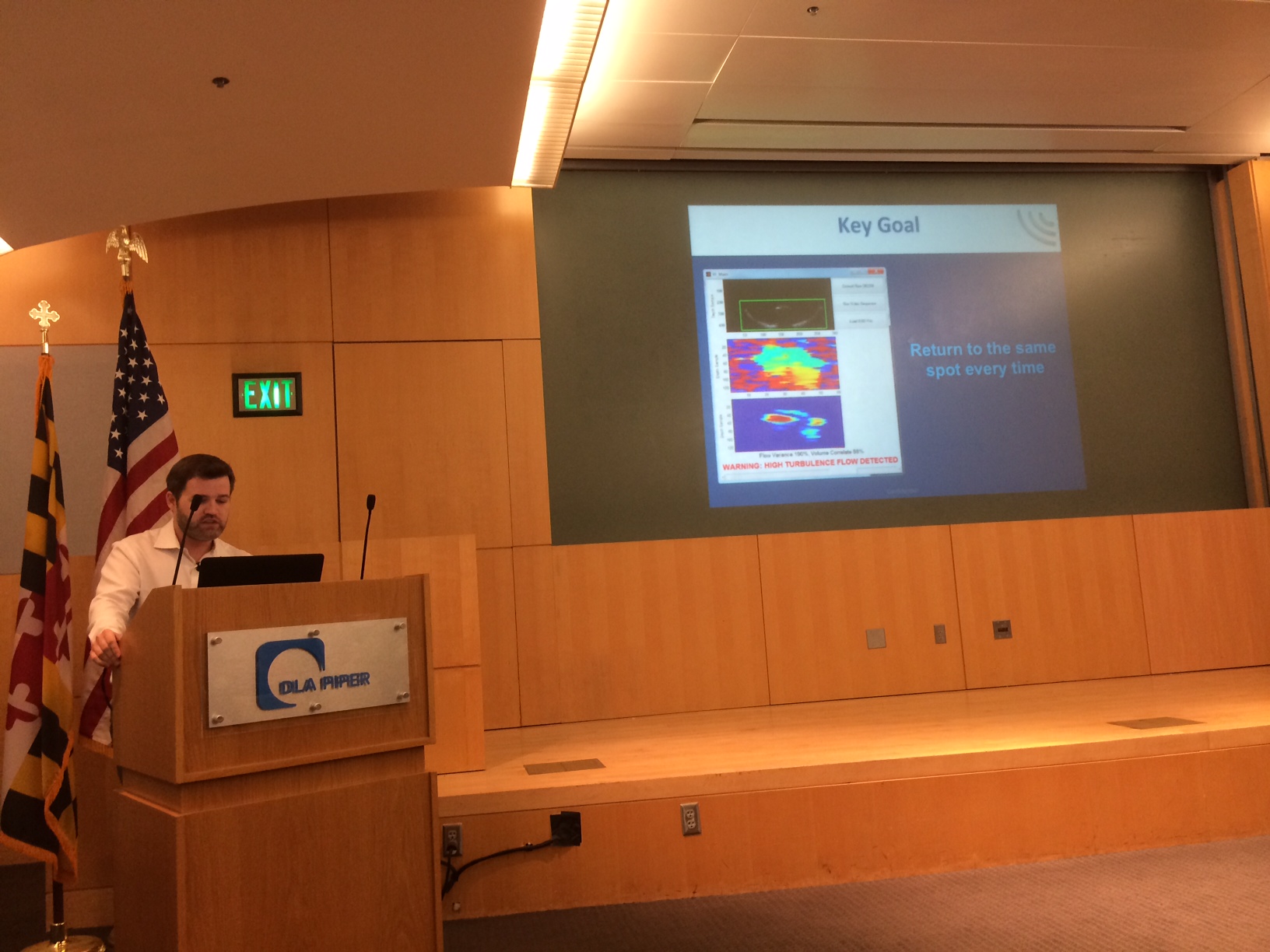Time is critical in catching blood clots after reconstructive surgery. A few hours can be the difference between a minor procedure, a major revision or worse.
“If you recognize it too late, the clot grows like a spider and crawls out into all the nooks and crannies,” said Dr. Devin Coon, a Johns Hopkins reconstructive surgeon.
Coon is helping to develop a way to help medical professionals catch clots faster. He presented Wednesday at the Baltimore TechBreakfast in Mount Washington.
His company, Sonavex, is developing EchoSure, a system for a tiny implant that can be wrapped around a vein and artery at the surgical site.
“The two-part solution consists first of an absorbable, echogenic marker placed underneath the vessels at the surgical site (EchoMark) and software (EchoFind) to guide users to the right position and extract blood flow data,” the company explains on its website.
[youtube https://www.youtube.com/watch?v=p28WKyM4IHk]
Using a doppler ultrasound or the company’s own software, a non-expert medical professional (i.e., a nurse or ultrasound tech) can determine how well blood is flowing to the area.
Clots will form after between seven and 15 percent of reconstructive surgeries, Coon said. Many of those clots require new procedures. Right now, doctors use a color duplex ultrasound to detect clots.
“It’s too complicated for bedside providers like nurses to use this routinely,” said Coon, Sonavex’s chairman and chief medical officer.
Currently, EchoSure is in animal testing, the only level of testing required under FDA rules for such devices, Coon said. He showed imagery of a healthy pig’s ultrasound. The artery glowed a solid red, while the vein pulsed blue. On another pig’s clotted blood vessels, the artery indicator was dark while the vein dully flashed blue.
“It’s really easy to use if you can give people that visual feedback,” Coon said.
Before you go...
Please consider supporting Technical.ly to keep our independent journalism strong. Unlike most business-focused media outlets, we don’t have a paywall. Instead, we count on your personal and organizational support.
3 ways to support our work:- Contribute to the Journalism Fund. Charitable giving ensures our information remains free and accessible for residents to discover workforce programs and entrepreneurship pathways. This includes philanthropic grants and individual tax-deductible donations from readers like you.
- Use our Preferred Partners. Our directory of vetted providers offers high-quality recommendations for services our readers need, and each referral supports our journalism.
- Use our services. If you need entrepreneurs and tech leaders to buy your services, are seeking technologists to hire or want more professionals to know about your ecosystem, Technical.ly has the biggest and most engaged audience in the mid-Atlantic. We help companies tell their stories and answer big questions to meet and serve our community.
Join our growing Slack community
Join 5,000 tech professionals and entrepreneurs in our community Slack today!

The person charged in the UnitedHealthcare CEO shooting had a ton of tech connections

From rejection to innovation: How I built a tool to beat AI hiring algorithms at their own game

Where are the country’s most vibrant tech and startup communities?


